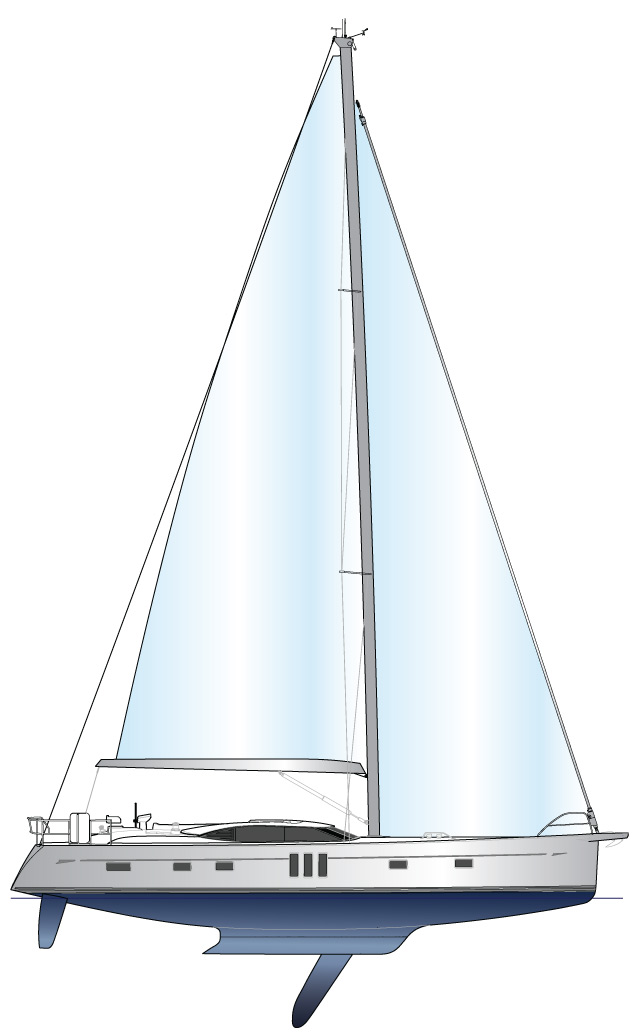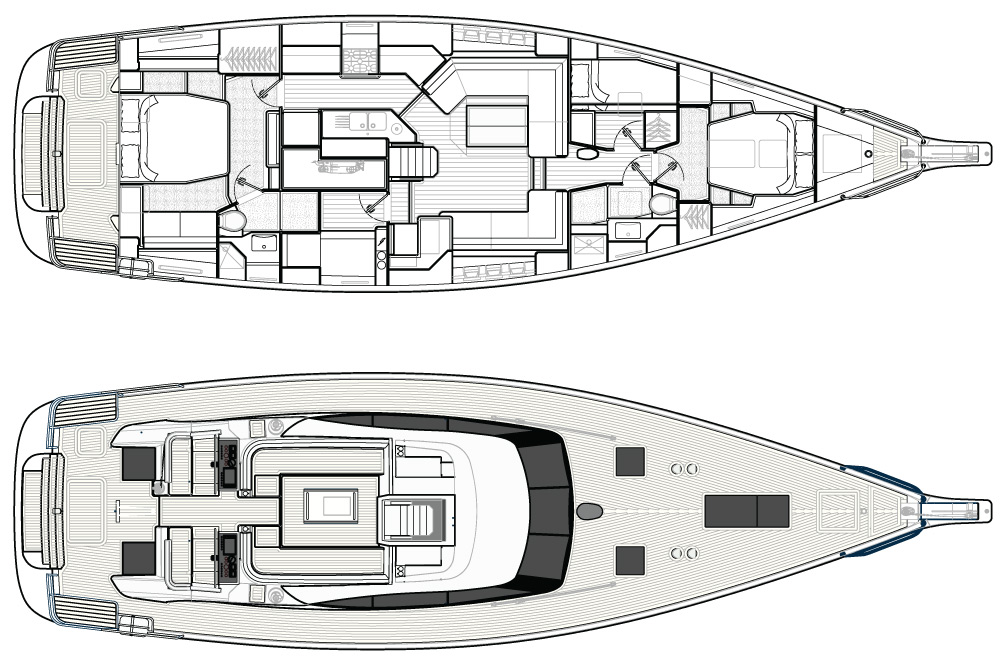Oyster 565
This passagemaker is packed with style and comfort for cruising
This month we are going to look at two large cruising boats: the Hylas 60 and the Oyster 565. They share a target market and a general approach to styling and hull shape. The numbers are so close that the boats are ripe for comparison and we can have some fun.

The Oyster 565 is a design by Rob Humphreys and the Oyster Design Studio. Hard to know who did what on the design, but the hull, rig and appendages would all be by Humphreys. The target market is sailors looking for very comfortable cruising and excellent performance. Given the designers chosen for the projects I think we can safely assume both boats will sail very well.
The Oyster is the lighter boat by almost 9,000 pounds, but this will be subject to how the boats are outfitted and in the end I would think both boats will be close in displacement. The D/L of this design is 176. The L/B is 3.35 and it’s what I consider textbook normal these days. The Oyster comes with the option of an iron centerboard that will draw 13 feet. Board-up draft is 5 feet 6 inches.
The standard fixed keel draws 8 feet 2 inches. There are twin rudders. The LOA to the tip of the integral sprit is 59 feet 3 inches. Freeboard is moderate and the beam is carried aft as is de rigueur these days.
All in all, it’s a moderate looking hull with no surprises and no chines. Not having chines is a bit of a surprise with so many designs of this type sporting them these days.
Centerboard aside, probably the biggest difference between the two boats that I can see is in the layouts. The Oyster has three staterooms and the Hylas has four. With three staterooms you get a palatial owner’s cabin aft with an attached head and shower stall. There is a small settee to starboard of the slightly off-center double berth.
The galley is in the passageway to port and down a level from the main cabin. This works and provides an efficient geometry for the galley. But it removes the cook from the action in the main cabin. I like to cook and for me I think I would appreciate being in my own “hole” away from any audience while I work. The five-second rule comes to mind.
This is a really nice saloon with generously sized settees and dining area to port. But that dining area looks a bit snug for six people. If you can sleep six you had better be able to feed six. OK, I’ll eat at the nav table to starboard.
It looks like there is a small workroom to starboard adjacent to the engine space. Not really sure what that area is. The drawing is a bit ambiguous there.
Forward of the main cabin there is a small cabin to port with upper and lower single berths and a hanging locker. To starboard there is a head with a shower stall that will serve both forward sleeping cabins. There is a centerline double berth in the forward cabin. The foc’s’le looks adequate and there is a large lazarette aft. Fixed windows in the topsides along with large windows in the cabintrunk will keep the interior well lit. It probably goes without saying that Oyster is capable of doing variations on this layout to suit your layout preferences.
The deck layout of the Oyster is remarkably clean. Hatches are flush. There are four dorades forward and two short lengths of jib track adjacent to the mast. Lines come aft under covers to emerge at the winches just forward of the twin wheels. Note that the wheels are on a level elevated above the main cockpit sole for good visibility. It looks like the mainsheet is led to a reel winch below the deck. There is no mainsheet traveler.
The cockpit seats look to be about 8 feet long. You are not going to be crowded in this walk-through cockpit. There is a large dining table in the cockpit and a large flush hatch to access the lazarette.
Looking at the sailplan this is a good-looking boat. The styling is subtle. The rig is a triple swept-spreader fractional type. The SA/D is 18.79 using the main and a 100% foretriangle.
It’s hard to find fault with this design. Oyster has been producing great cruising boats for a long time.
LOA 59’3”; LOD 56’6”; LWL 52’ 3”; Beam 16’10”; Draft fixed keel 8’ 2”, centerboard down 13’, board up 5’6”; Displ. 56,370 lb.; Ballast 16,667 lb.; Sail area 1,727 sq. ft.; water 198 gal.; Fuel 250 gal.; Auxiliary 150 hp. SA/D 18.79; L/B 3.35; D/L 176
Oyster Yachts USA Ltd.
Newport Shipyard, One Washington St.
Newport, RI 02840
401-846-7400


Comments